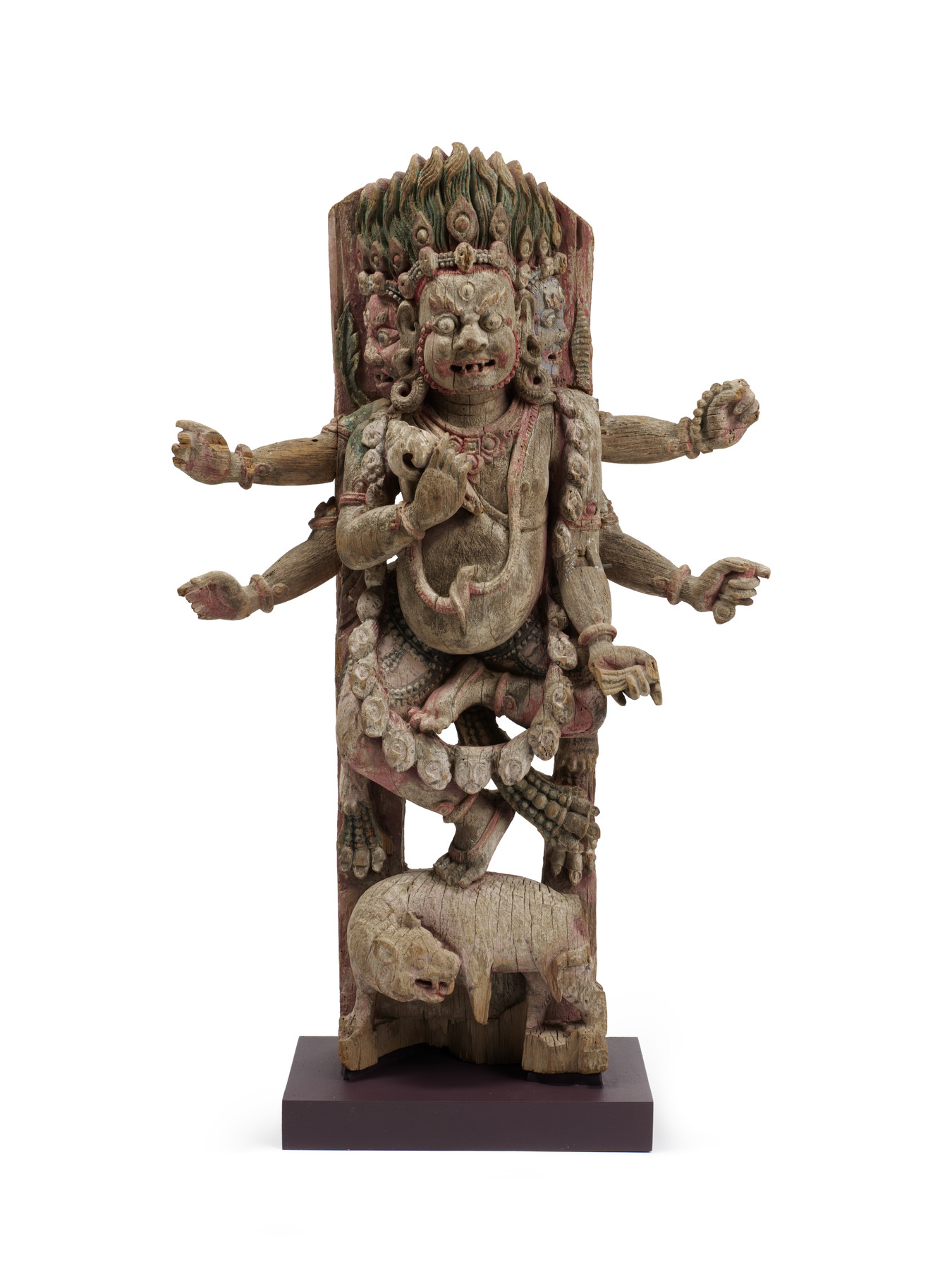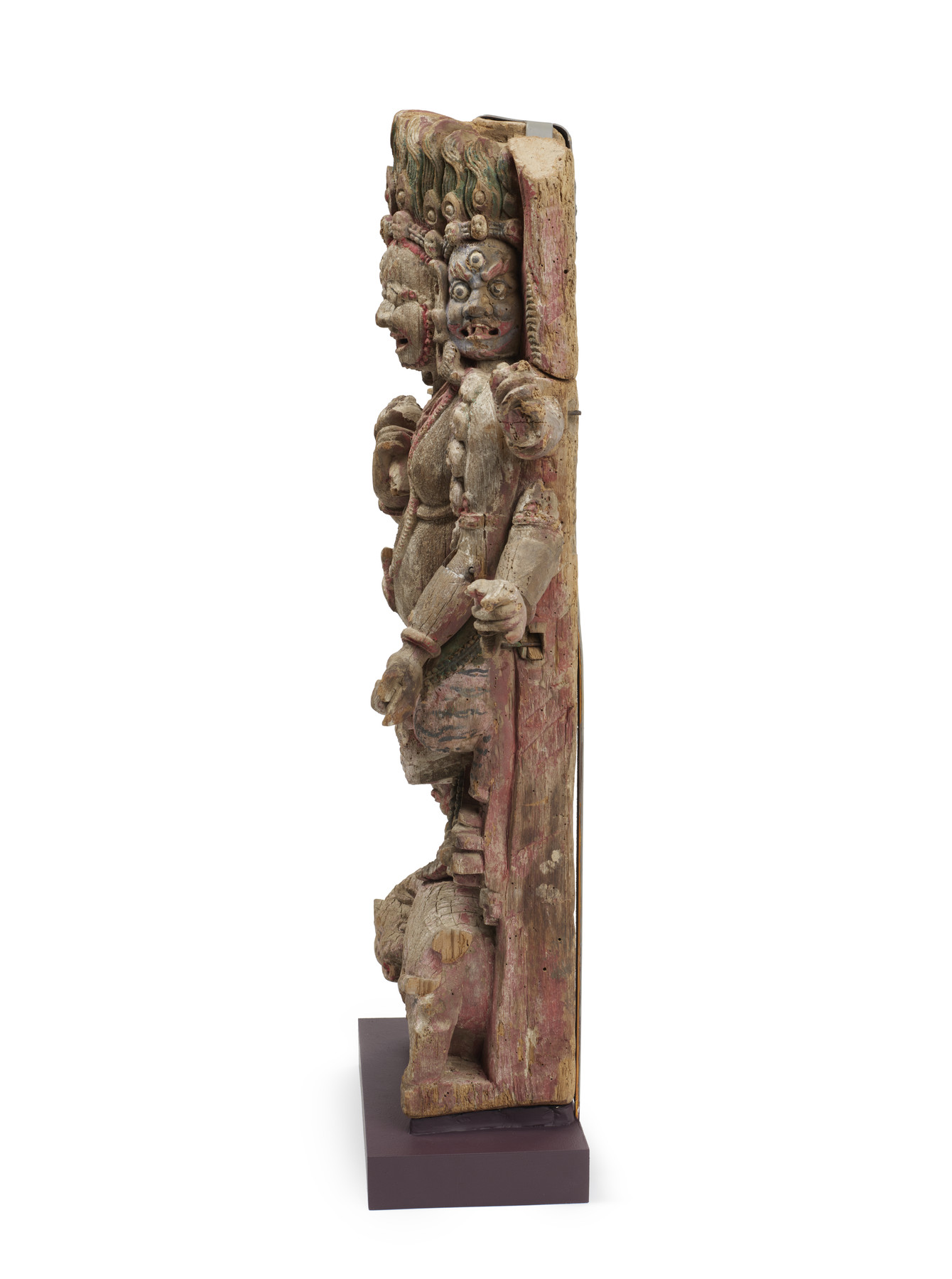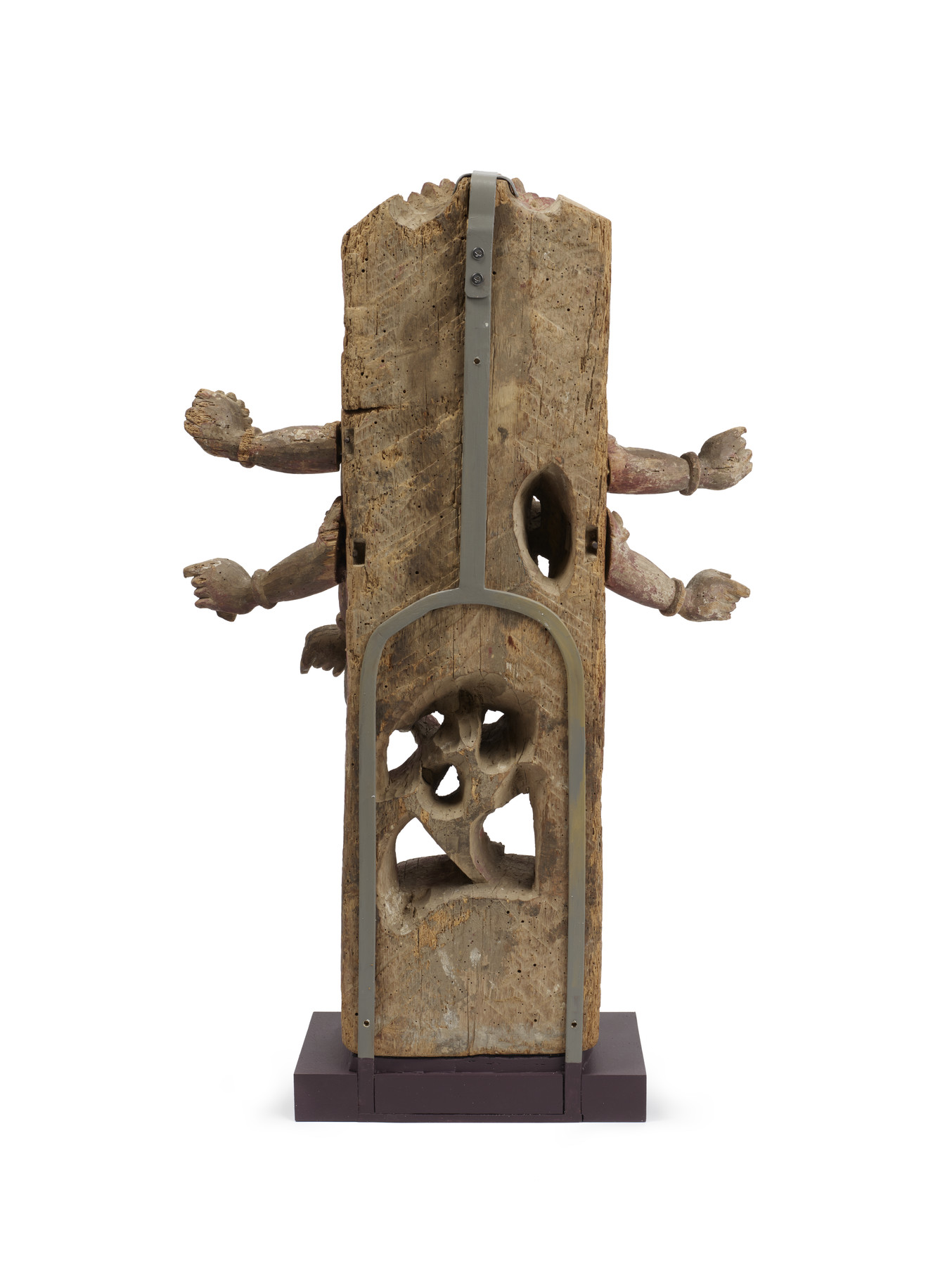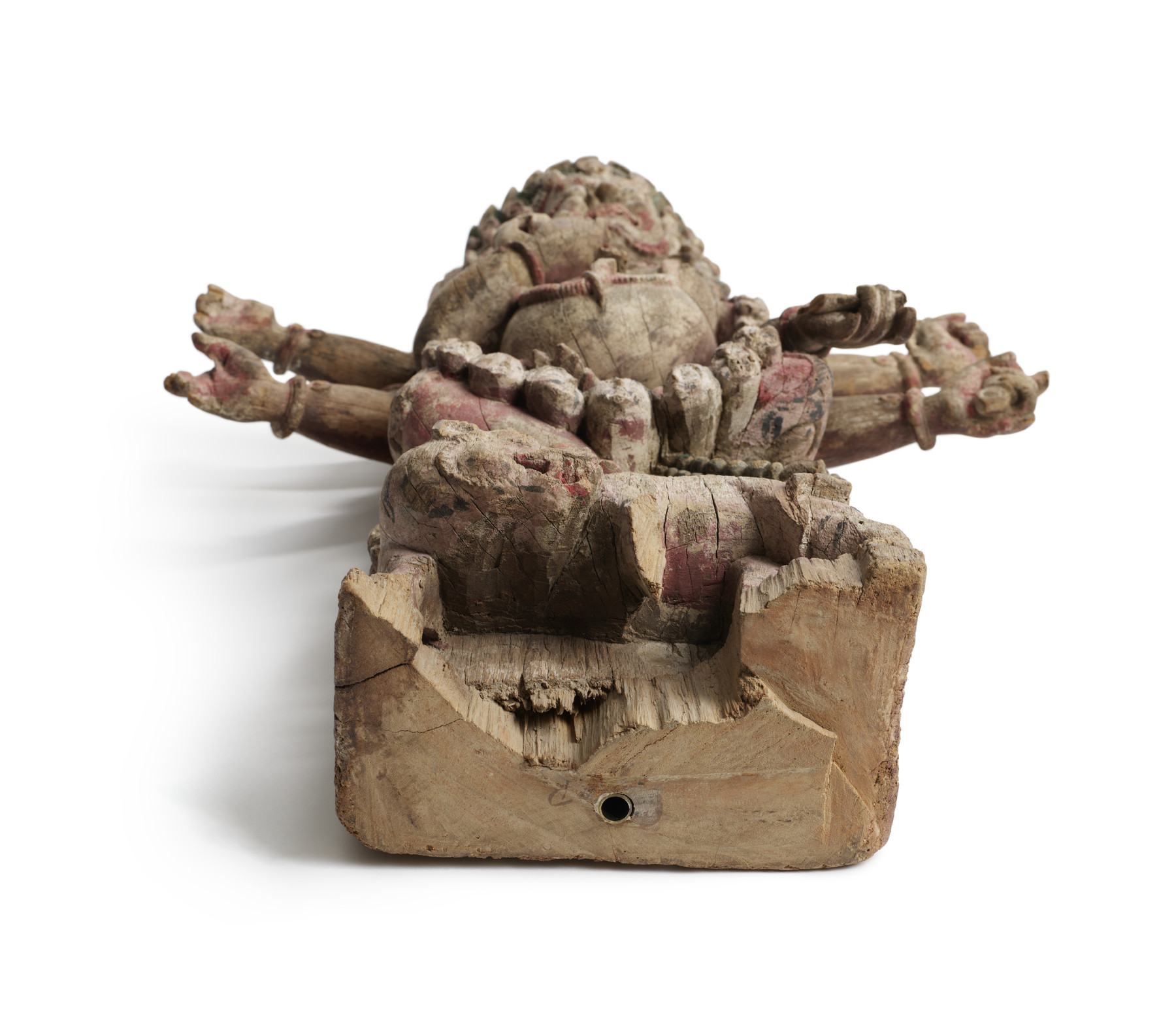Strut with Bhairava
(India, Nepal, and Tibet)
This wood carving was once used as a strut to support the overhanging eave of a structure. Such struts with figures, usually of deities, are a characteristic feature of the wood-and-brick architecture in the Kathmandu Valley and beyond. The struts are usually brightly polychromed, as this piece was once. Those that remain are much admired for their rich, colorful carvings, which contribute enormously to the aesthetic appeal of Newar architecture.
Provenance
Provenance (from the French provenir, 'to come from/forth') is the chronology of the ownership, custody, or location of a historical object. Learn more about provenance at the Walters.
Mark Shatin, Los Angeles [date and mode of acquisition unknown]; John and Berthe Ford, Baltimore, May 1970, by purchase; Walters Art Museum, 2021, by gift.
Exhibitions
| 2001-2003 | Desire and Devotion: Art from India, Nepal, and Tibet in the John and Berthe Ford Collection. The Walters Art Museum, Baltimore; Santa Barbara Museum of Art, Santa Barbara; Albuquerque Museum, Albuquerque; Birmingham Museum of Art, Birmingham; Hong Kong Museum of Art, Hong Kong. |
Geographies
Nepal, Kathmandu Valley (Place of Origin)
Measurements
H: 28 1/2 x W: 18 x D: 7 in. (72.4 x 45.7 x 17.8 cm)
Credit Line
Gift of John and Berthe Ford, 2021
Accession Number
In libraries, galleries, museums, and archives, an accession number is a unique identifier assigned to each object in the collection.
In libraries, galleries, museums, and archives, an accession number is a unique identifier assigned to each object in the collection.
25.271














